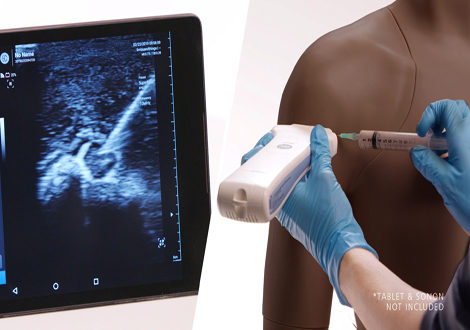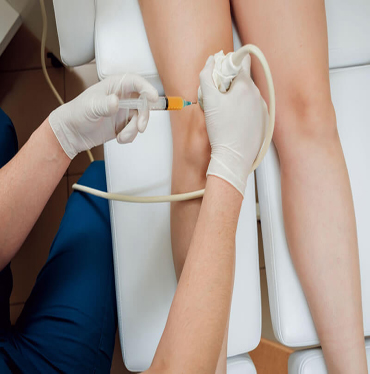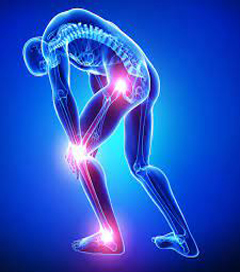

In the 1940's and 1950's Earl Gedney, D.O. and George Hackett, M.D. standardized the clinical application of Prolotherapy that is still relevant today. A Prolotherapy treatment involves a series of injections into the affected damaged area. This injection "tricks" the body into repairing itself. The mild reaction leads to healthy ligament and tendon growth tightening the weakened area. Treatments haven been shown to potentially allow a gradual buildup of tissue to strengthen the area against further injury.
Prolotherapy is a form of Regenerative Medicine. Initially, doctors used to inject a harmless liquid sugar solution, called dextrose, to the area that was causing the problem. The fluid then irritated the tissues where it's been injected and stimulated the body's repair process. Sensing the minor inflammation from the Prolotherapy, the body sends healing and growth nutrients to the scene and begins to build fresh new tissue. In the case of joints and other bodily regions, the new tissue can increase stability and eliminate pain without surgery. Ligaments and tendons that had been stretched, worn, or torn can be revitalized by this technique.
Today expert physicians in the field of Regenerative Medicine like our doctors use Plasma Rich Platelets derived from the patient's own blood. The platelet solution contains concentrated healing factors which enhances the healing cascade and has been shown to be even better than the Dextrose. We offer this state-of-the-art cutting edge technology to our patients. Although Prolotherapy has been utilized in clinical practices for over 80 years its popularity as a treatment for chronic pain has intensified over the past two decades among both physicians and patients as clinical and anecdotal observations have proven its effectiveness as a non-surgical option for joint and soft tissue pain.

Our bodies have an amazing capacity to heal. It is one of the most important bodily functions. From recovering after falls and injuries to dealing with bacteria, viruses, bad food and toxins, we have ancient, built-in mechanisms designed to defend and repair ourselves. However, sometimes the body's natural healing process fails us. There are many factors that can contribute to this. For example, when a person doesn't change positions often and an area is subject to repetitive trauma or pressure, it can slow down or even stop the healing process.
Another common scenario is reduced healing due to aging. As the body ages the healing cascade does not work as efficiently. Decreased circulation, other diseases like Diabetes, and reduced stem cell function are all factors that we know can slow down or even prevent proper healing. We know that the body is less able to heal and regenerate when stem cells get worn out and cannot do their job of replicating and regenerating new tissue. Children are teeming with active stem cells. This is why children and young adults heal so rapidly but older adults do not. Scientists are still researching why stem cell numbers and efficiency decreases with age.
Plasma Rich Platelets are derived from the patient's own blood is drawn and then spun down to concentrate the platelets for re-injection into the damaged area. The blood platelets contain growth and healing factors so when it is concentrated the resulting solution becomes "rich" in healing factors, hence the name "Platelet Rich" plasma." In our office, we utilize the latest techniques using the platelet solution for Prolotherapy. A study in 2021 in the journal Anesthesia and Pain Medicine found that prolotherapy with Dextrose or Platelets commonly have regenerative therapeutic properties, but the central mechanisms of prolotherapy with Dextrose and Platelets are different.
The Dextrose procedure triggers an inflammatory response, increases platelet-derived growth factor expression, and upregulates several mitogenic factors that may act as signaling mechanisms in tendon repair. The Platelet solution procedure augments the natural healing process of tendon repair and regeneration by delivering high concentrations of growth factors directly to the damaged area."
In other words, Dextrose Prolotherapy does not act directly as a patch on a tear but rather is initiates a new and natural healing response to injury. Platelet Prolotherapy does act in a "patch-like" method to repair a tear. It is this understanding of these two treatments which leads us to use Prolotherapy with a solution rich in platelets.
The are major and significant differences between Prolotherapy and Cortisone. Cortisone injections can successfully mask pain, but the effects are short lived and don't work that well after multiple injections. Furthermore, Cortisone has been shown in many studies to accelerate degenerative osteoarthritis through cartilage breakdown. This is why we strongly discourage Cortisone treatments.
Over the years we have seen many patients who have received steroid (cortisone) injections for joint pain at other facilities. For many excessive cortisone treatments lead to a worsening of their injury and chronic pain. Again, while some people do benefit from cortisone in the short run, new evidence indicates that cortisone causes more problems than it helps. Prolotherapy is a regenerative injection treatment that could make the area actually more resistant to future injury and pain.
Prolotherapy is considered a safe alternative to surgery; and a better option than pain medications, cortisone and other steroidal injections. The Prolotherapy procedure also allows the patient to keep working and/or training during treatment. Most patient do a series of 4 treatments spaced about a month apart.
Yes, Plasma Rich Platelet solutions are created from your own blood. We will draw your blood and prepare the solution for injections into the injured area that needs healing
Sometimes the Platelets may be mixed with Embryonic Stem Cells or Wharton's Jelly which contains special cells that turbo charge the regeneration of healing tissues.
The area to be treated is anesthetized with local anesthesia. We also use a freezing spray to numb the area. Injection inside the joint causes some mild pressure which dissipates quickly.
Some patient will report increased pain in the area for about 2 days after treatment. This is the controlled inflammation that eventually leads to healing by activating the body's natural healing processes.
Most patients will notice improvement with less pain or less frequent pain or both with the very first treatment. Most patients need between 3-6 sessions spaced about 4-6 weeks apart. Some patients have complete pain relief with just 2-3 sessions.
Patients may experience bruising, pain, swelling, and stiffness at the injection site. These usually last a few days up to a week. On rare occasions there may be nerve, tendon or ligament injury or infection. We use ultrasound and sometimes fluoroscopy as well as anatomical markers to ensure accurate injections
Call Now For a FREE Consultation - (310) 271-5875
Click to call